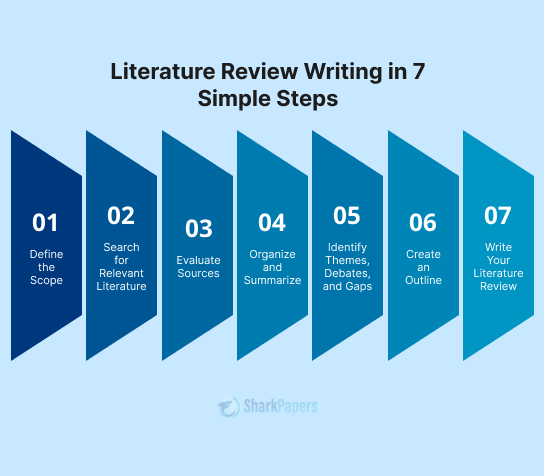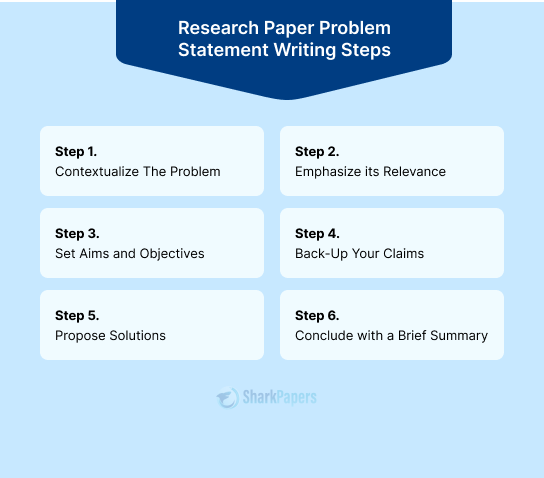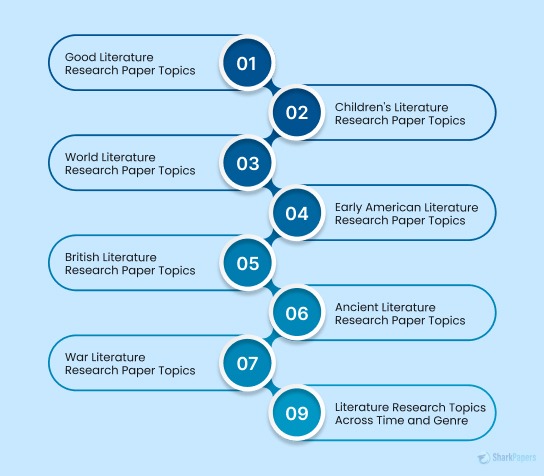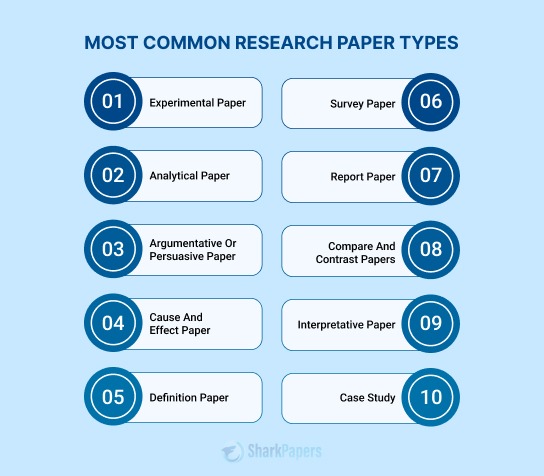General Formatting for Chicago Style Research Papers
The general paper formatting rules are slightly different across different research paper format types. Chicago style is no exception. Here are the main guidelines:
- Use a legible font such as Times New Roman or Arial.
- Use 12 pt. font size throughout the paper.
- Set one-inch margins on all sides of your document.
- Double-space your entire text except for block quotes, table titles, and figure captions
- Align your text to the left; do not justify.
- Use a first-line indent for your paragraphs (0.5 inches or 1.27 cm).
- Start with the first page of your text and mention the page numbers in the upper right corner
Order of Sections
Assemble your research paper in the following order when following the Chicago style:
- Title/Cover page
- The research paper body
- Appendix section (if applicable)
- Endnotes (if applicable)
- Bibliography
Take a look at this sample Chicago research paper outline:
A. Background information on the topic A. Overview of relevant literature B. Discussion of key concepts and theories C. Identification of gaps in the literature III. Methodology Section A. Description of research design B. Explanation of data collection methods C. Discussion of data analysis techniques IV. Results Section A. Presentation of research findings B. Analysis and interpretation of results A. Comparison of findings with existing literature B. Exploration of implications of the results C. Consideration of limitations and future research directions A. Summary of key findings B. Restatement of thesis C. Suggestions for further research VII. Endnotes A. Superscript numbers in the text corresponding to detailed citations at the bottom of each page or on a separate page after the conclusion VIII. Bibliography A. List of all sources cited in the paper, formatted according to Chicago style guidelines |
Formatting the Chicago Style Title Page
According to the Chicago Manual of Style research paper format, you don't have to make a separate title page. Just center the research paper title at the top of the first page. But if your instructor asks for one, you can follow Turabian style guidelines.
Turabian style is a version of the Chicago style that's used for arranging research papers, theses, and dissertations. Here are the guidelines:
- Title: Put it in the middle of the page, about a third of the way down. Make it bold and use headline capitalization.
- Subtitle (if applicable): If your paper has a subtitle, write it below the main title, also in bold.
- Your Name: Towards the bottom of the page, about two-thirds down, include your name, student code (if needed), course name, course code, and the date. Each piece of information goes on a separate line.
- Instructor's Name: Mention the name of your instructor.
- Course Information: Details about your course, like the course name and code.
- Date: The date you're submitting the paper.
Make sure that you keep everything centered and double-spaced, and use the same font as the rest of your paper. Also, do not include a page number on the title page. Instead, count it in your total page count, starting the page numbering from page 2.
Here’s a Chicago style example title page:

Chicago Style Headings
The Chicago Manual of Style doesn't outline a specific system for organizing headings in your research papers. However, it does offer some general guidelines that you should follow:
- Stay Consistent: Make sure your headings and subheadings maintain the same structure throughout your document.
- Use Proper Capitalization: Employ headline-style capitalization. This means you capitalize the first and last words of the heading, as well as all major words.
- Format Subheadings: Begin each subheading on a new line. You can differentiate them by adjusting the font size, style, or using bold or italics. Ensure that each level of subheading is clearly distinguished and remains consistent.
- Maintain Hierarchy: Limit your headings and subheadings to a maximum of three levels of hierarchy.
How to Format Numbers and Acronyms
In Chicago style, the formatting of numbers and acronyms can vary depending on their context. Here's how to format them:
Numbers
- Write out numbers from one to one hundred. For example, you'd write "twenty-five" or "seventy-nine."
- Use numerals for numbers 100 and above. For instance, you'd write "105" or "231."
- Use numerals for measurements, percentages, and dates. So, it's "5 miles," "25%," or "December 12, 2023."
- When numbering sections, chapters, pages, figures, or tables, use numerals. For example, "Section 2," "Chapter 3," "Page 10," "Figure 1," or "Table 2."
Acronyms
- Define acronyms when you first use them in the text, followed by the acronym in parentheses. For instance, you might write, "The World Health Organization (WHO) provides global health guidance."
- After you've defined an acronym, you can use it alone in subsequent references. For example, you could write, "WHO's guidelines are widely followed."
- If an acronym is well-known (like FBI or NASA), you can use it without explanation.
When it's not possible to avoid starting a sentence with a numeral or acronym, write out the full phrase or number rather than using the numeral or acronym alone.
Chicago Style Citation Format
The Chicago format allows you to choose from two citation styles:
- Author-date style
- Notes-bibliography system
Author-Date System Format
In the Author-Date system, you put the author's last name and the publication date in parentheses at the end of the sentence where you mention the reference. Always place parentheses after any punctuation.
This helps the reader easily find the full details of the source in the bibliography.
Below is an example of Chicago author-date in-text citation:
The theory proposed by Johnson (2019) suggests that cultural factors play a significant role in shaping individual behavior. |
Notes-System Format
In notes and bibliography style, when you mention a source in your text, you refer to it with superscript numbers. These numbers correspond to footnotes or endnotes where the full citations appear. The format for footnotes and endnotes is the same.
Here’s how you should format footnotes in Chicago style:
- Placement: You place footnotes at the bottom of the page where the reference occurs. If you're using endnotes, they go on a separate page after the body of your paper.
- Note Number: You put the note number at the end of the sentence where the reference occurs, after any punctuation. Remember to superscript it always.
- Formatting: Within the notes themselves, numbers are full-sized and followed by a period. The first line of any footnote should be indented 1/2” from the margin, with subsequent lines flushed left.
- Font and Spacing: All notes should be typed in 12pt Times New Roman font, single-spaced. Each note should be separated by a blank line space.
- Numbering: Use Arabic numerals only and never reuse a number. If you’re citing the same work again immediately after you've already cited it, use "ibid."
- Shortened Citations: For sources you refer to more than once, use a shortened citation.
- Multiple Sources: If citing multiple sources in a single note, separate each citation with a semicolon. Avoid using 2 note numbers at the end of a sentence.
See this example of a sample footnote citation in Chicago format:

Chicago Style Bibliography or Reference Page format
At the end of your research paper, you will include a separate page listing full references of all the sources you mentioned previously.
This page is labeled Bibliography if you’ve used the notes-bibliography system. If you use the author-date system, label it as the Reference page.
Here is the Chicago style paper format for the bibliography/reference page.
- Start with the word "Bibliography" centered at the top of the page.
- Utilize the same font and size as the rest of your paper (usually Times New Roman, 12 pt).
- Double-space between each entry, but leave a blank space between each individual entry.
- You should arrange the entries alphabetically by the author's last name. If there's no author, alphabetize by the first significant word in the title.
- The first line of each entry starts at the left margin, while the subsequent lines are indented 0.5 inches
Take a look at this practical example of a Chicago style bibliography page.

Chicago Research Paper Format Examples
For you to have a thorough understanding, we have compiled a list of Chicago formatted paper examples.
For a more comprehensive list of examples, check out our Chicago research paper examples blog for valuable insights.
Avoid These Common Mistakes in Chicago Format
The official guidelines provided by the Chicago Manual of Style are clear and straightforward. However, there are some common mistakes that researchers and students make while formatting their research papers.
You should avoid these common mistakes:
Confusion in Name Format:
- Using first name last name in notes and last name, first name in bibliography.
Repeated Numbering in Notes:
- Reusing numbers for citations in notes instead of assigning a new number to each citation.
Incorrect Indentation:
- Not applying a first line indent for each entry in notes and failing to use a hanging indent in the bibliography.
Disorderly Bibliography:
- Failing to arrange bibliography entries alphabetically by author's last name or title if author's name is absent.
Misuse of "Works Cited":
- Inserting "Works Cited" at the beginning of the bibliography, which is characteristic of MLA style, not Chicago style
In conclusion, this blog serves as a comprehensive guide to formatting research papers according to the Chicago Manual of Style. It covers various aspects such as general formatting, citation styles, numbering, acronyms, and bibliography formatting.
By following the guidelines outlined in this blog, you can ensure that your research paper is formatted correctly and adheres to Chicago style conventions.
Whether you're a student, researcher, or writer, this blog provides valuable information to help you effectively format your work and communicate your ideas clearly.
However, if you need professional help, let SharkPapers.com lend a hand! Our paper writing service is here to assist you with all your research paper writing needs.
Whether you need help with research paper editing or writing the entire paper, we've got you covered!



















)

































-12114.jpg)













 Not seeing it? Check Promotions or Spam — inboxes get protective.
Not seeing it? Check Promotions or Spam — inboxes get protective.